
The Scorpion is the name of two fictional characters who starred successively in an eponymous comic book series published by Atlas/Seaboard Comics in the 1970s.

The Scorpion is the name of two fictional characters who starred successively in an eponymous comic book series published by Atlas/Seaboard Comics in the 1970s.
The Scorpion ran three issues, cover-dated February to July 1975. [1] The premiere was written and drawn by character creator Howard Chaykin. On the second issue, Chaykin's pencil art was inked by the team of Bernie Wrightson, Michael Kaluta, Walt Simonson and Ed Davis.
Citing lack of control over his creation, Chaykin quit and the third issue was produced by writer Gabriel Levy and penciler Jim Craig, with uncredited inker Jim Mooney. [2]
The protagonist for the first two issues was an immortal adventurer in the 1930s whose then-current identity is Moro Frost.
In the third and final issue, the Scorpion is a present-day superhero, David Harper. This revamp played off an introductory sequence in the first issue that indicated the Scorpion changed his identity every few years, allowing this to be the same man.
Following the cancellation of the series, Chaykin used the Scorpion as the basis for his Marvel Comics character Dominic Fortune. [3]
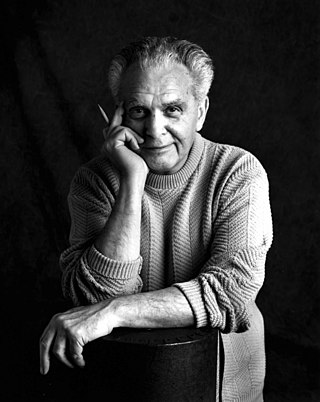
Jack Kirby was an American comic book artist, widely regarded as one of the medium's major innovators and one of its most prolific and influential creators. He grew up in New York City and learned to draw cartoon figures by tracing characters from comic strips and editorial cartoons. He entered the nascent comics industry in the 1930s, drawing various comics features under different pen names, including Jack Curtiss, before ultimately settling on Jack Kirby. In 1940, he and writer-editor Joe Simon created the highly successful superhero character Captain America for Timely Comics, predecessor of Marvel Comics. During the 1940s, Kirby regularly teamed with Simon, creating numerous characters for that company and for National Comics Publications, later to become DC Comics.
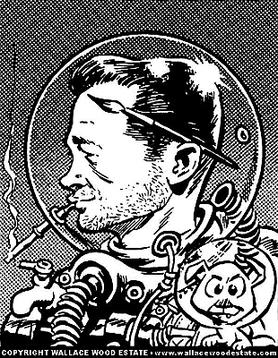
Wallace Allan Wood was an American comic book writer, artist and independent publisher, widely known for his work on EC Comics's titles such as Weird Science, Weird Fantasy, and MAD Magazine from its inception in 1952 until 1964, as well as for T.H.U.N.D.E.R. Agents, and work for Warren Publishing's Creepy. He drew a few early issues of Marvel's Daredevil and established the title character's distinctive red costume. Wood created and owned the long-running characters Sally Forth and Cannon.
Sal Buscema is an American comics artist, primarily for Marvel Comics, where he enjoyed a ten-year run as artist of The Incredible Hulk and an eight-year run as artist of The Spectacular Spider-Man. He is the younger brother of comics artist John Buscema.
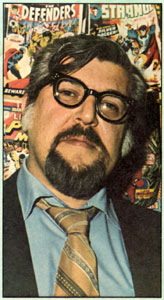
John Buscema was an American comic book artist and one of the mainstays of Marvel Comics during its 1960s and 1970s ascendancy into an industry leader and its subsequent expansion to a major pop-culture conglomerate. His younger brother Sal Buscema is also a comic book artist.
Amazing Adventures is the name of several anthology comic book series, all but one published by Marvel Comics.

James N. Aparo was an American comic book artist, best known for his DC Comics work from the late 1960s through the 1990s, including on the characters Batman, Aquaman, and the Spectre, along with famous stories such as The Brave and the Bold, "A Death in the Family", and "KnightFall".

Gil Kane was a Latvian-born American comics artist whose career spanned the 1940s to the 1990s and virtually every major comics company and character.
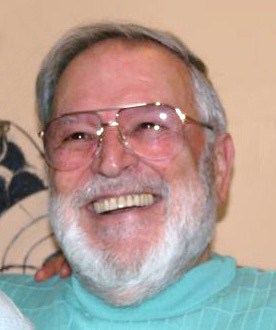
John Victor Romita was an American comic book artist best known for his work on Marvel Comics' The Amazing Spider-Man and for co-creating characters including Mary Jane Watson, the Punisher, Kingpin, Wolverine, and Luke Cage. Romita was the father of John Romita Jr., also a comic book artist, and the husband of Virginia Romita, who was for many years Marvel's traffic manager.

Howard Victor Chaykin is an American comic book artist and writer. Chaykin's influences include his one-time employer and mentor, Gil Kane, and the mid-20th century illustrators Robert Fawcett and Al Parker.

Alfonso Williamson was an American cartoonist, comic book artist and illustrator specializing in adventure, Western, science fiction and fantasy.

Walter Simonson is an American comic book writer and artist, best known for a run on Marvel Comics' Thor from 1983 to 1987, during which he created the character Beta Ray Bill. He is also known for the creator-owned work Star Slammers, which he inaugurated in 1972 as a Rhode Island School of Design thesis. He has also worked on other Marvel titles such as X-Factor and Fantastic Four, on DC Comics books including Detective Comics, Manhunter, Metal Men and Orion, and on licensed properties such as Star Wars, Alien, Battlestar Galactica and Robocop vs. Terminator.

Atlas/Seaboard Comics is a line of comic books published by the American company Seaboard Periodicals in the 1970s. Though the line was published under the brand Atlas Comics, comic book historians and collectors refer to it as Atlas/Seaboard Comics to differentiate it from the 1950s Atlas Comics, a predecessor of Marvel Comics. Seaboard was located on Fifth Avenue in Manhattan, New York City.
James Noel Mooney was an American comics artist best known for his long tenure at DC Comics and as the signature artist of Supergirl, as well as a Marvel Comics inker and Spider-Man artist, both during what comics historians and fans call the Silver Age of Comic Books and what is known as the Bronze Age of Comic Books. He sometimes inked under the pseudonym Jay Noel.
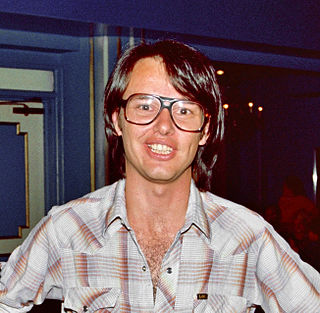
Mike Friedrich is an American comic book writer and publisher best known for his work at Marvel and DC Comics, and for publishing the anthology series Star*Reach, one of the first independent comics. He is also an artists' representative.

The Academy of Comic Book Arts (ACBA) was an American professional organization of the 1970s that was designed to be the comic book industry analog of such groups as the Academy of Motion Picture Arts and Sciences. Composed of comic-book professionals and initially formed as an honorary society focused on discussing the comic-book craft and hosting an annual awards banquet, the ACBA evolved into an advocacy organization focused on creators' rights.
Hilary Barta is an American comic book writer and artist.

Tower of Shadows is a horror/fantasy anthology comic book published by the American company Marvel Comics under this and a subsequent name from 1969 to 1975. It featured work by writer-artists Neal Adams, Jim Steranko, Johnny Craig, and Wally Wood, writer-editor Stan Lee, and artists John Buscema, Gene Colan, Tom Sutton, Barry Windsor-Smith, and Bernie Wrightson.
This article lists major events in the field of comics during the 1980s.

Josef "Joe" Rubinstein is a comic book artist and inker, most associated with inking Marvel Comics' The Official Handbook of the Marvel Universe and the 1982 four-issue Wolverine miniseries by Chris Claremont and Frank Miller. He is also known for giving artist Art Adams his first professional work.

Sidney Greene was an American comic book artist known for his work for a host of publishers from the 1940s to 1970s. As an inker on DC Comics series including Batman, Green Lantern, Justice League of America and The Atom, he helped to define the company's house style for its 1960s Silver Age superheroes.